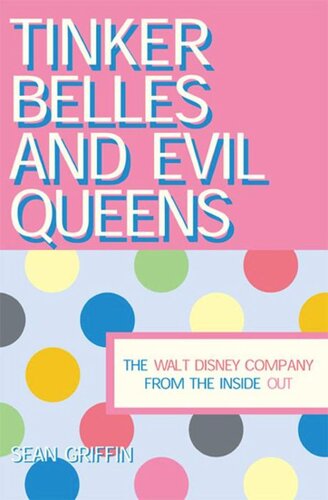

Most ebook files are in PDF format, so you can easily read them using various software such as Foxit Reader or directly on the Google Chrome browser.
Some ebook files are released by publishers in other formats such as .awz, .mobi, .epub, .fb2, etc. You may need to install specific software to read these formats on mobile/PC, such as Calibre.
Please read the tutorial at this link: https://ebookbell.com/faq
We offer FREE conversion to the popular formats you request; however, this may take some time. Therefore, right after payment, please email us, and we will try to provide the service as quickly as possible.
For some exceptional file formats or broken links (if any), please refrain from opening any disputes. Instead, email us first, and we will try to assist within a maximum of 6 hours.
EbookBell Team

4.4
52 reviewsFrom its Magic Kingdom theme parks to its udderless cows, the Walt Disney Company has successfully maintained itself as the brand name of conservative American family values. But the Walt Disney Company has also had a long and complex relationship to the gay and lesbian community that is only now becoming visible.
In Tinker Belles and Evil Queens, Sean Griffin traces the evolution of this interaction between the company and gay communities, from the 1930s use of Mickey Mouse as a code phrase for gay to the 1990s "Gay Nights" at the Magic Kingdom. Armed with first-person accounts from Disney audiences, Griffin demonstrates how Disney animation, live-action films, television series, theme parks, and merchandise provide varied motifs and characteristics that readily lend themselves to use by gay culture. But Griffin delves further to explore the role of gays and lesbians within the company, through an examination of the background of early studio personnel, an account of sexual activism within the firm, and the story of the company's own concrete efforts to give recognition to gay voices and desires.
The first book to address the history of the gay community and Disney, Tinker Belles and Evil Queens broadly examines the ambiguous legacy of how modern consumerism and advertising have affected the ways lesbians and gay men have expressed their sexuality. Disney itself is shown as sensitive to gay and lesbian audiences, while exploiting those same audiences as a niche market with strong buying power. Finally, Griffin demonstrates how queer audiences have co-opted Disney products for themselves-and in turn how Disney's corporate strategies have influenced our very definitions of sexuality.